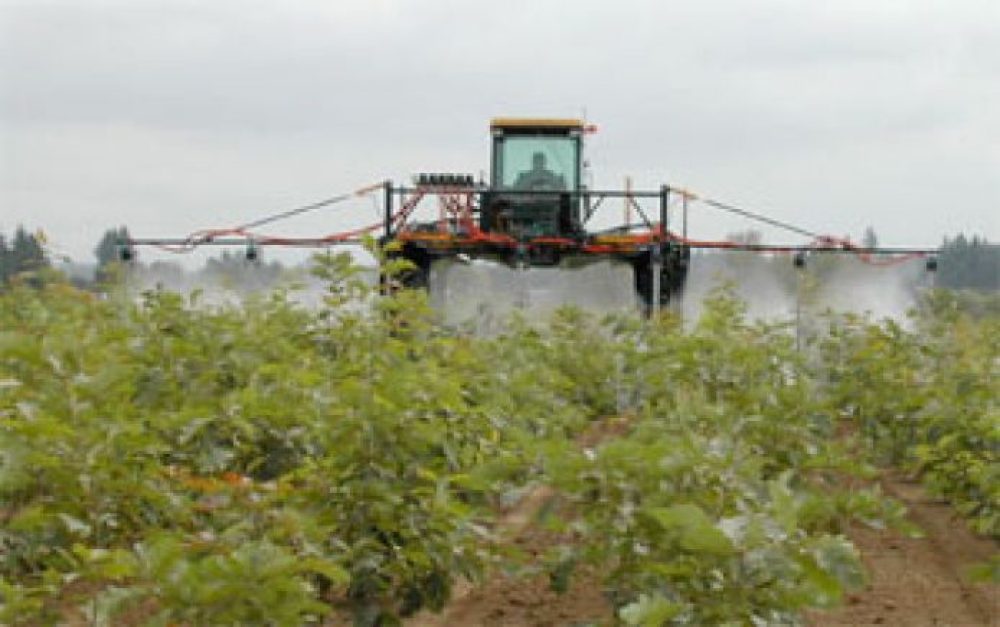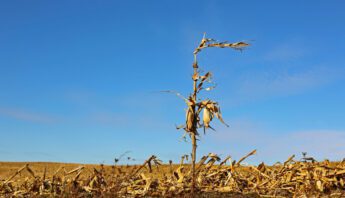You’ve all heard the news: farmers across the country are losing their fields to superweeds so formidable and fast-spreading that they break farm machinery and render millions of acres of farmland useless. These superweeds have evolved as a direct consequence of Monsanto’s RoundUp Ready pesticide-seed package. Now superbugs are emerging, resistant to Monsanto’s transgenic insecticidal crops. Ecologists predicted this ecological disaster 15 years ago.
The big question is, can we possibly learn from this ecological and agronomic disaster? The U.S. Department of Agriculture and Monsanto’s rival, Dow Chemical, apparently cannot.
From bad to worse
Instead of abandoning this losing strategy, Dow is trying to get us running faster on the same old broken pesticide treadmill. Dow and USDA are hoping to quietly approve a new genetically engineered corn seed that basically swaps RoundUp (glyphosate) out and an even worse weedkiller (2,4-D) in. Bad idea.
As with Monsanto’s RoundUp Ready lines, the herbicide with which these seeds are engineered to be used (2,4-D) will surge in use. Dow aims to get 2,4-D-resistant corn to market this year, soy next year and cotton in 2015. These three crops dominate U.S. agriculture, blanketing over 100 million acres of mono-cropped countryside and driving the pesticide market. Only this time, the fallout will be even worse. Here’s why:
- 2,4-D is a more toxic herbicide, both to humans and to plants. 2,4-D is a reproductive toxicant (associated with lower sperm counts) and its formulations have been linked to cancer (in particular non-Hodgkins lymphoma), disruption of the immune and endocrine (hormone) systems and birth defects. EPA has also expressed a “concern for developmental neurotoxicity resulting from exposure to 2,4-D.”
- 2,4-D does and will drift off of target crops – both through spray drift and volatilization. The latter enables chemicals to travel with moving air masses for miles. Neither applicator nor innocent bystander can prevent such movement. The spread of 2,4-D across our lands will damage non-target crops and vegetation, devastate adjacent ecosystems and poses a very real threat to rural economies and farmers growing non-2,4-D-resistant crops. Conventional farmers growing their product miles away will suffer severe crop losses, while organic farmers will lose both crops and certification, resulting in business failures, job losses and an economic unraveling of already-stressed rural communities.
- 2,4-D-resistant “superweeds” will arise and spread just as RoundUp-resistant “superweeds” have taken over farms and countryside in the Midwest and Southeast. Where will this leave struggling farmers? What even more deadly pesticide will the biotech companies resort to next?
- Corn is wind-pollinated which means that genetic material from 2,4-D corn will contaminate non-GE corn. You cannot put a GE genie back in the bottle.
What next?
Will Dow provide compensation to farmers, their children and rural communities for the harms likely to occur should the company secure approval of its 2, 4-D resistant corn? I rather doubt it. Dow has still refused to assume responsibility for the deaths and devastation arising from the pesticide explosion in Bhopal, India in 1984, so why would the company show any integrity now?
It will take an active, engaged public to get USDA back on track and in the business of serving the public interest.
What about USDA? Can we expect our public agency to carefully scrutinize the likely fallout of approving 2,4-D resistant corn? One problem is that USDA does not really want to know what the public thinks.
One giveaway sign: USDA opened the required public comment period over the holiday break, as the Agency tends to do for controversial decisions they want to bury.
More significantly, they’ve asked the public to comment only on whether or not the new GE corn poses a “plant pest risk” — not on whether the impacts of this new GE crop are more likely to strengthen farmers’ ability to grow healthy food safely or to devastate their health, livelihoods and the environment all in one go.
But Agency reluctance to face facts shouldn’t stop us from exercising our rights. We’ll have to be loud — really loud — because an active engaged public is what it will take to get our agencies back on track and in the business of serving the public interest, not corporate profits.
Take Action » Tell USDA we want off the pesticide treadmill! This dangerous and antiquated herbicide shouldn’t be on the market, and we certainly should not be giving Dow license to profit from driving up use. Sign our petition to USDA.








